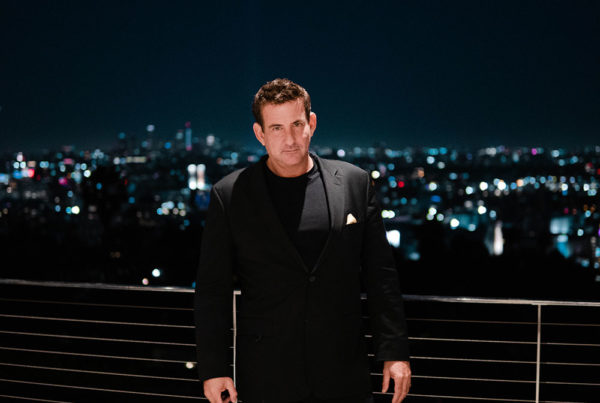What causes a titan to fall? What is the deciding factor in the crumble of a dynasty? When we think back through history, there are numerous examples of once-mighty empires that eventually crumbled and fell. Ancient Rome, Greece, and Babylon all come to mind. What was the common factor time and again that caused these monumental declines of once great empires? The answer is almost always the same – a failure to keep up with the times and change with the constantly shifting sands of technology.
Let’s look at how this lesson applies to the modern world. Sears, Roebuck, and Co. – more simply known as “Sears” – was a venerable titan of American retail, started in the year 1886 and well-known in every American household. The fatal mistake that has brought Sears to its knees – and caused this titan to fall – is a failure to comprehend, connect to, and clearly communicate with the modern customer. I’ll explain this concept in greater detail further down on this blog.
Sears’ brick-and-mortar store count has plummeted from a high of 4,010 at the end of 2011 to just 1,275 at the end of April 2017. Sears made the fatal mistake of failing to update its brand for the technology age, which was underscored during the holiday season of 2011 when retail sales rose and Internet sales soared, but Sears racked up such poor sales that it announced it would close 120 stories, and projected its earnings to sink more than 50% – a catastrophic number in the retail business – in what was usually the time of the year when retailers take in their biggest revenues. In June 2017 – the same month that this blog is being written – Sears announced the closure of an additional 17 retail outlets nationwide, as the once-iconic department store chain reported just a quarter of positive same-store sales growth in the last 12 years.
In the words of Robert Spector, a retail historian who is also the author of “Amazon.com: Get Big Fast”, Sears “tried to hold onto what they were, rather than trying to reinvent themselves. Like Kodak, Sears did not leap forward when it needed to do so.” Although Sears later invested in online shopping and mobile applications, it was a classic tale of “too little, too late.” Sears “could have used its brands to transcend its recent reputation”, agrees Spector, but “it has deeper issues of relating to customers.” As Spector says, “Amazon, from the beginning, has been all about the customer experience. Amazon never promised something it couldn’t deliver.” When Edward Lampert, a hedge fund manager, acquired Sears, he noticeably did not invest in remodeling or refreshing the many worn-out and outdated looking 2,200 retail stores Sears had, and failed to recognize the critical nature of technology and online based marketing and sales efforts. In the words of David Reibstein, a marketing professor at the Wharton School of Business, Amazon “has moved beyond because of its convenience. It’s the new version of Sears.” Or as department store historian Michael Lisicky puts it, “Amazon is Sears 100 years later.” Below, we’re going to explore just how innovative and disruptive Amazon.com (and other companies like Amazon) truly are.
Compare the foregoing with Amazon.com’s focus on a company culture that is cutting-edge and innovative, as opposed to a stagnant and outdated business atmosphere that has ultimately caused the downfall of Sears. By creating a company culture that is constantly updating and changing with technology and innovation, Amazon.com (or just “Amazon”) has overtaken the traditional, well-established sales outlets and emerged victorious over all of them. Amazon has stayed on the cutting edge of modern technology – implementing mobile solutions, constantly updated technology, and a rapidly-shifting online sales interface to keep their brand fresh, new, and infinitely updated when compared to all other traditional brick-and-mortar retailers. The result? As of 2017, Amazon is worth more than these 10 well-known retailers combined: Macy’s, Kohl’s, Sears, JC Penney, Nordstrom, Best Buy, Barnes & Noble, Dillard’s, Gap, and Target. Amazon’s market value as of beginning of year 2017 was just north of $370 billion, while all the other aforementioned retailers were collectively worth a little less than $95 billion combined. Amazon is worth twice as much as Home Depot and is literally worth six times as much as Lowe’s.
Ever since Amazon emerged on the retail horizon in 1994, there has been no turning back for the retail giant. Amazon has become a behemoth that has steamrolled over all its traditional brick-and-mortal rivals, both big and small, on its way to overwhelming market dominance. One of the largest differentiators between Amazon and its more traditional rivals? Amazon’s never-ending commitment to innovation. Amazon spent almost 12% of its total net sales (equating to roughly $16.09 billion dollars) on technological innovation and content in 2016, up from 10.4 percent in 2014. On the converse side, Amazon has also demonstrated a willingness to focus on the simplest of factors – something as traditional as timely delivery – to massively outpace its competitors. In terms of delivery, Amazon scores over all of its competitors when it comes to reliable delivery, which saves consumers time (an infinitely valuable and non-renewable resource.) Furthermore, Amazon’s reputation, and reliance upon, outstanding customer service massive outpaces its rivals. As Jeff Bezos stated in an interview with Wired.com magazine in 2015, “More and more money will go into creating a great customer experience, and less into shouting about the service. Word of mouth is becoming more powerful. If you offer a great service, people find out.”
Let’s use another example – the “organized chaos” encouraged by the CEO of one of the most powerful companies on earth, that constantly sits on the cutting edge of modern technology – Google.com. When Eric Schmidt joined Google as CEO in 2001, he was put in charge of a few hundred employees; when he stepped back as CEO to become chairman 10 years later, there were around 32,000 employees at the company. Schmidt is now the executive chair of Alphabet, Google’s parent company and one of the world’s most influential conglomerates. It has more than 60,000 employees and a market cap of about $663 billion.
It was the early years, when growth was especially rapid, that gave him the foundation of both his and all of Google’s management philosophy: the critical nature of finding a “smart creative” who could “thrive in chaos,” in Schmidt’s own words. According to Schmidt, as Google scaled upwards, they kept hiring “glue people,” people who may be pleasant and competent but “who sit between functions and help either side but don’t themselves add a lot of value.” He and Google’s cofounders, Larry Page and Sergey Brin, decided it was time to overhaul their hiring system. They developed various processes for finding talent — including peer interviews, tests, and lines of questioning — but Schmidt said that ultimately two simple things matter more than anything in a job candidate, and they’re the same for a startup or a massive corporation.
They are (1) persistence and (2) curiosity.
Schmidt stated that “persistence is the single biggest predictor of future success. … And the second thing was curiosity. What do you care about? The combination of persistence and curiosity is a very good predictor of employee success in a knowledge economy.” He said it matters less how you discover those traits in the hiring process than the actual discovery of them. And then finally, ask yourself if you would enjoy working with that person, since your final decision “has a lot to do with if the person is interesting or not.”
What is the true takeaway here? When I started my company, I started with a desk and a telephone. The most important step towards success, when my company became ranked by Inc Magazine as a top company 4 years in a row? Getting rid of the desk. By fostering a system of organized “chaos”, a company encourages fluctuation, transition, and growth – all of which are the essential lifeblood of staying modern and relevant. This lesson is repeated not only in company cultures but in nature as well – think of the basic principles of evolution, in which the most successful living organisms are able to change and grow in order to adapt and thrive in their environments. It is essential that companies follow nature and act the same. By bringing on board those team members who are able to “thrive in chaos”, a company creates a culture that is able to shift and grow, so that instead of becoming stagnant, outdated, and overwhelmed with changes in the market and in technology (which led to Sears’ downfall), the company instead grows stronger, more creative, and more diversified – as is the case with both Amazon and Google. This is the true defining factor that leads some “titans” to crumble and fall, while others continue to thrive and grow more powerful than ever, with no limits in sight.
Tim S. Marshall
Award-Winning Author of “The Power of Breaking Fear”
Click here for your FREE download of my eBook, “Strengthening Your Emotional Bullseye“

Title Photo Art: Banksy


